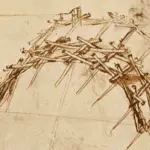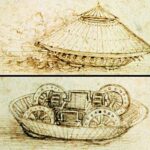Da Vinci Helicopter (Aerial Screw)
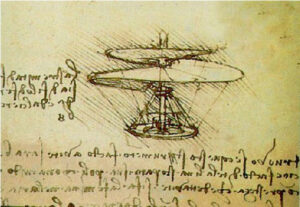
Leonardo da Vinci Helicopter
Leonardo da Vinci Helicopter, also known as the aerial screw, was a visionary concept long before achieving actual flight was possible.
His design, sketched in the late 15th century, featured a helical screw-shaped rotor that compressed air to lift the device off the ground.
Though it was never built and tested in his lifetime, this idea has fascinated engineers and historians alike, sparking numerous attempts to recreate it using modern materials and technology.
For those intrigued by aviation history, Leonardo da Vinci’s helicopter offers a glimpse into the innovative mind of one of history’s greatest thinkers.
The aerial screw wasn’t just a flight of fancy but rather a precursor that laid the groundwork for future inventions like the modern helicopter that we see today.
It was more than just a sketch; it showed da Vinci’s deep interest in the principles of aerodynamics and flight.
If you want to explore how ancient ideas have shaped today’s technology, Leonardo da Vinci’s designs still inspire curiosity and innovation.
His work exemplifies how bold ideas can eventually play a significant role in technological advancements.
Explore how this ingenious design inspired concepts in flight, modern drones, and helicopter development, bridging the past with the present in a seamless journey through time.
Background of Leonardo da Vinci
Leonardo da Vinci was a multifaceted genius of the Italian Renaissance whose work encompassed art, engineering, and science. His broad range of skills is best captured in his designs, including the famous Leonardo da Vinci helicopter, which embraced creativity and scientific thought.
Renaissance Man
Leonardo is often described as the ultimate Renaissance Man.
His interests spanned various disciplines, reflecting the era’s ideals of human potential and achievement.
Born in 1452, he became a master painter, sculptor, engineer, and theorist. His knowledge extended beyond art to include anatomy, mathematics, and mechanics.
His detailed studies of the human body and nature are reflected in works like The Vitruvian Man, which illustrates the blend of art and science that characterized his approach.
This diversity of skills laid the groundwork for pioneering ideas, such as the da Vinci helicopter, an early concept of vertical flight.
Contributions to Science and Art
Leonardo’s contributions to science and art were revolutionary.
In art, his enduring masterpieces, such as the Mona Lisa and The Last Supper, showcase his innovative use of perspective and light.
In science, his notebooks reveal a visionary mind engaged in intense study, documenting early concepts of aeronautics like the da Vinci aerial screw.
Though these designs were not realized in his lifetime, they highlight a relentless curiosity.
His innovative thinking and meticulous observations continue to influence modern engineering and artistic pursuits, demonstrating how seamlessly he integrated artistic talent with scientific inquiry.
Concept of the Aerial Screw
The Leonardo da Vinci helicopter design often called the aerial screw, is celebrated for its innovative approach to achieving flight. Influenced by nature and da Vinci’s observations, the design showcases both creativity and engineering foresight.
Inspirations and Influences
Leonardo da Vinci’s interest in flight was deeply inspired by his observations of nature, particularly bird flight and seeds.
His studies of bird anatomy helped him better understand lift and propulsion. Da Vinci was also influenced by seeds that twist as they fall, like maple seeds.
These natural elements sparked his imagination and guided his vision of flying machines.
In his quest to conquer the skies, da Vinci combined artistry with scientific inquiry. This includes his development of other concepts like parachutes.
While a military engineer, the idea of flight captured his attention. He combined practical needs with his fascination with movement through the air.
The Design and Sketches
The aerial screw da Vinci designed featured a spiral shape.
This design consisted of a helical rotor about four meters in diameter. The device was crafted from lightweight materials such as reed, linen, and wire.
It relied on the power of human effort. Expressly, four men turn cranks on a central platform to generate lift.
Da Vinci’s helicopter sketches provided key insights into his thought process.
His drawings are detailed, showing how he envisioned the mechanism working.
While the helicopter Leonardo da Vinci created was never built to be functional, his drawings laid foundational ideas for modern aerodynamics and rotorcraft design.
Archimedes’ screw and Leonardo da Vinci’s aerial screw
Archimedes’ screw
Archimedes’ screw, invented in ancient Greece, was a pioneering device that utilized a helical surface to lift water efficiently. This screw-shaped pump demonstrated the practical application of rotational motion to achieve vertical movement.
The principles behind this invention provided a foundational understanding of how helical structures could manipulate and move fluids, which later inspired future innovations in various fields, including aeronautics.
Leonardo da Vinci’s aerial screw: Inspired by Archimedes
The mechanics of Archimedes’ screw directly influenced Leonardo da Vinci’s Aerial Screw. Leonardo envisioned a helical rotor that could compress air, similar to how Archimedes’ screw displaced water.
By scaling up the concept and applying it to air instead of water, Leonardo aimed to create a device capable of vertical flight. Although his aerial screw was never constructed, the design demonstrated a sophisticated understanding of helical motion and its potential applications in aviation, laying the groundwork for the development of modern helicopters.
Mechanics of the Helicopter Design
The Leonardo da Vinci helicopter was an early attempt to harness flight using a unique rotating structure.
This section explores the core principles that underscore its flight capabilities and the materials and construction techniques involved.
Flight Principles
Leonardo da Vinci’s helicopter design revolved around the concept of the aerial screw.
This apparatus aimed to lift off by spinning its helical surface, much like the function of modern helicopter blades.
The idea was that the screw-like structure would compress air underneath it, effectively generating lift and allowing the device to rise.
To accomplish this, da Vinci envisioned four men standing on a platform, turning cranks to spin the helical rotor.
This human-powered mechanism suggested an understanding of rotational forces despite the limitations of technology at the time.
While his design remained theoretical without practical realization, it provided valuable insights into rotary flight mechanics.
Materials and Construction
Da Vinci’s helicopter was proposed to be constructed using a combination of reed, linen, and wire, materials chosen for their lightweight and flexible properties.
The helical rotor, intended to measure around 15 feet in diameter, demonstrated how Leonardo’s keen observation of nature influenced his designs.
The structure of the aerial screw was imaginative, utilizing available materials.
Reed offered a solid yet light framework, while linen provided covering, and wire added structural stability.
These choices underscore da Vinci’s innovative approach to design in the absence of modern materials. Though it never flew, his inventive efforts laid the groundwork for future aviation developments.
Impact on Aeronautics
The helicopter designed by Leonardo da Vinci, often referred to as the aerial screw, has had a lasting impact on modern aviation. This inventive idea inspired future engineers to explore vertical flight and advanced engineering techniques.
Advancements in Vertical Flight
Leonardo da Vinci’s helicopter was a revolutionary concept in vertical flight.
While it was never built due to the technological constraints of the 15th century, the idea inspired later engineers to explore vertical lift, laying the groundwork for future development in helicopter technology.
His sketches showed a spiral-shaped device to compress air to lift the machine.
Although different from modern helicopters, the principles were foundational.
The idea that a flying machine could ascend directly influenced the future of vertical aviation.
The helical air screw design is often seen as a precursor to real helicopters.
Da Vinci’s Legacy in Engineering
The impact of Leonardo da Vinci’s helicopter sketch goes beyond just aviation.
His works in engineering showcased his understanding of mechanics, inspiring engineers for centuries.
His keen observations and imaginative designs laid a foundation for many modern engineering principles, encouraging the study of wind dynamics and innovative design.
Da Vinci’s approach to solving complex problems through drawing and modeling continues to influence modern engineering practices.
The Wright Brothers later drew inspiration from his concepts, contributing to the innovation of aircraft controls and aerodynamics.
This legacy continues as many still look to his drawings for inspiration in designing new technologies.
How did Leonardo’s Helicopter Work?
Although Leonardo da Vinci’s helicopter was never built, it was a testament to his exceptional innovative prowess. To understand how it might have worked, we need to delve deeper into the mechanics of the design and the principles on which it was based.
From Da Vinci Helicopter to Modern Technology
As we know it today, the helicopter is a marvel of modern technology that took many centuries and many inventors to develop. Let’s explore who created the first fully functional helicopter and how it compares to Leonardo da Vinci’s visionary design.
The First Fully Functional Helicopter
Igor Sikorsky’s VS-300
Russian-American aviation pioneer Igor Sikorsky invented the first practical, fully functional helicopter, the VS-300, which took its inaugural free flight in 1941.
This three-blade, single-engine design marked the start of the age of modern helicopters. Unlike Leonardo da Vinci’s helicopter concept, Sikorsky’s helicopter could lift off the ground and be controlled in flight, powered by an engine—a technology unavailable at the time.
Leonardo da Vinci’s Helicopter Design
The Aerial Screw Concept
Leonardo da Vinci’s helicopter, known as the “aerial screw,” was a visionary concept that aimed to create lift by displacing air downwards with a sizeable cork-screw structure made of reed, linen, and wire.
However, it lacked propulsion or control and operated solely on human power. Despite these limitations, da Vinci’s helicopter design was a significant step in the evolution of vertical flight and showcased his incredible ability to think beyond his era.
Technological Differences
Leonardo da Vinci’s helicopter relied on human power to attempt flight. His design, the aerial screw, featured a sizeable helical rotor intended to be spun manually. This approach sharply contrasts with today’s helicopters, which use potent engines for propulsion, allowing for sustained flight and maneuverability.
Modern helicopters benefit from gas turbine or piston engines that provide reliable lift and control, something da Vinci’s design could never achieve due to its reliance on impractical human energy. Materials have also evolved, with modern helicopters employing advanced metals and composites that improve durability and flight capacity.
Evolution of Rotary-Wing Aircraft
Leonardo da Vinci’s sketches inspired centuries of aviation development. Although he never built a working model, his ideas echoed through history.
Inventions like the autogiro in the early 20th century brought us closer to what da Vinci envisioned: controlled, sustained vertical flight. Today’s helicopters have evolved significantly, with complex rotor systems and computer-aided controls enhancing performance and safety.
The evolution from da Vinci’s helicopter invention to modern designs highlights the progress in understanding aerodynamics and engineering, reflecting mechanical innovation and creative thinking first sparked by visionaries like Leonardo da Vinci.
Modern Reconstructions
The Leonardo da Vinci helicopter has fascinated historians and engineers for centuries. Modern reconstructions of this aerial screw attempt to bring his vision to life with today’s materials and technology.
These reconstructions often focus on the foundational elements of Da Vinci’s design, such as the spiral shape intended to lift the machine using manual power.
Materials Used
- Wood: Frame structure
- Linen: Canopy for the screw
- Metal: Rotational components
These builds highlight Da Vinci’s innovative design and explore how it might function with contemporary engineering.
While Da Vinci’s original vision relied on human power, modern enthusiasts often used motors to simulate the intended lift effect.
Challenges
- Weight: Designing lightweight yet durable materials
- Mechanics: Replicating Da Vinci’s original manual propulsion
- Stability: Ensuring stability during simulated flight
Reconstructing Da Vinci’s designs offers insight into his genius and creativity. Institutions like the Museum of Science in Boston and the Uffizi Gallery in Florence often showcase these models to educate the public about Renaissance engineering.
These exhibits provide context and appreciation for Leonardo da Vinci’s numerous contributions to aviation.
Interest in Leonardo da Vinci’s helicopter invention continues to inspire, pushing the boundaries of historical understanding and engineering exploration.
Reconstruction projects serve as a bridge between historical genius and modern ingenuity. By revisiting and reimagining Da Vinci’s work, they remind us of his enduring influence on aviation.
Final Thoughts
Leonardo da Vinci’s helicopter design showcased his incredible imagination and foresight. This early concept of vertical flight highlighted his understanding of mechanics, even though it was not feasible with the technology of his time.
His idea included a helical screw meant to lift and propel through the air using manual power.
Despite its limitations, the design remains a fascinating part of history. Scholars often compare Leonardo’s sketches to modern helicopters, noting their structural differences.
Modern helicopters use powerful engines, whereas his design relied entirely on human effort, making flight impossible with his materials.
Da Vinci’s helicopter continues to inspire inventors and engineers. It symbolizes innovation and the pursuit of flight, and many believe it paved the way for future advancements in aeronautics.
His vision encouraged others to explore new ideas in flight and machinery, bridging past ambitions to modern realities.
Frequently Asked Questions
Leonardo da Vinci’s helicopter concept, known as the aerial screw, sparked curiosity about its feasibility and historical role. Here, questions about his designs and related inventions are addressed.
Did Leonardo da Vinci make a helicopter?
Leonardo da Vinci did not build an actual helicopter. He designed the aerial screw, which featured a spiral design, in the late 15th century as a theoretical model for flight. This invention was never turned into a working model.
Would Leonardo’s aerial screw work?
In modern terms, Leonardo’s aerial screw would not function as intended. The design required materials and technology beyond what was available during his time. Its principles might graphically resemble modern helicopters, but it lacks the practical mechanics to generate lift.
What did da Vinci call his flying machine?
Leonardo referred to his flying machine concept as the “aerial screw.” The description stemmed from its helical shape, resembling a giant screw that he projected could be driven through the air. This name reflects his innovative approach to early aviation ideas.
Who made the first drawing of a helicopter?
Leonardo da Vinci is credited with creating the first known helicopter sketches. His drawings of the aerial screw date back to around 1485. These early sketches laid foundational ideas that inspired later developments in aviation.
Why did Leonardo design a helicopter but never try to build it?
The technological constraints of his era limited Leonardo’s helicopter design. The materials and aerodynamics knowledge needed to build such a machine were unavailable.
Consequently, his designs remained conceptual, focusing on exploring innovative possibilities rather than practical construction.
How much is a Leonardo helicopter worth?
No known completed helicopter is directly built from Leonardo’s designs, so assigning a worth to an actual Leonardo helicopter is speculative. However, da Vinci’s manuscripts and sketches are highly valued historical artifacts. Due to their significant impact on art and science, they are often considered priceless.
Did da Vinci invent anything?
Leonardo da Vinci was a prolific inventor who created numerous designs, although few were built in his lifetime. His creations include concepts for tanks, parachute systems, and various machines. These ideas demonstrated his visionary thinking and have influenced countless innovations over the centuries.
What helicopters does Leonardo make?
Today, Leonardo S.p.A., formerly known as AgustaWestland, is recognized for producing modern helicopters. These include models like the AW101 and AW169, known for their advanced technology and widespread use. The company’s name reflects an homage to da Vinci’s pioneering spirit in aviation.
When was the first helicopter invented?
Igor Sikorsky developed the first practical helicopter in 1939. His design marked the first successful rotary-wing flight. Leonardo da Vinci’s earlier concepts provided theoretical inspiration for such advancements.
Did Leonardo da Vinci invent the parachute?
Yes, Leonardo da Vinci conceptualized an early version of the parachute. His design included a linen pyramid-shaped covering. However, it was never tested during his lifetime. Later tests showed that da Vinci’s parachute was a sound idea.
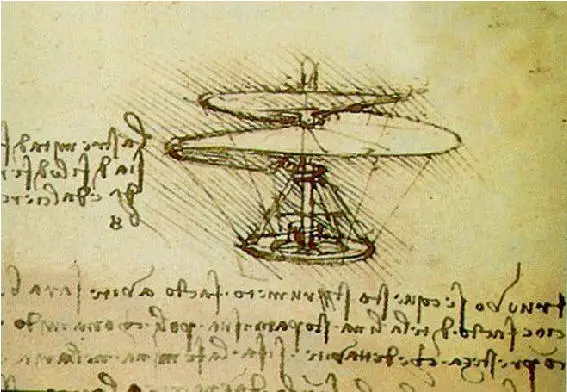
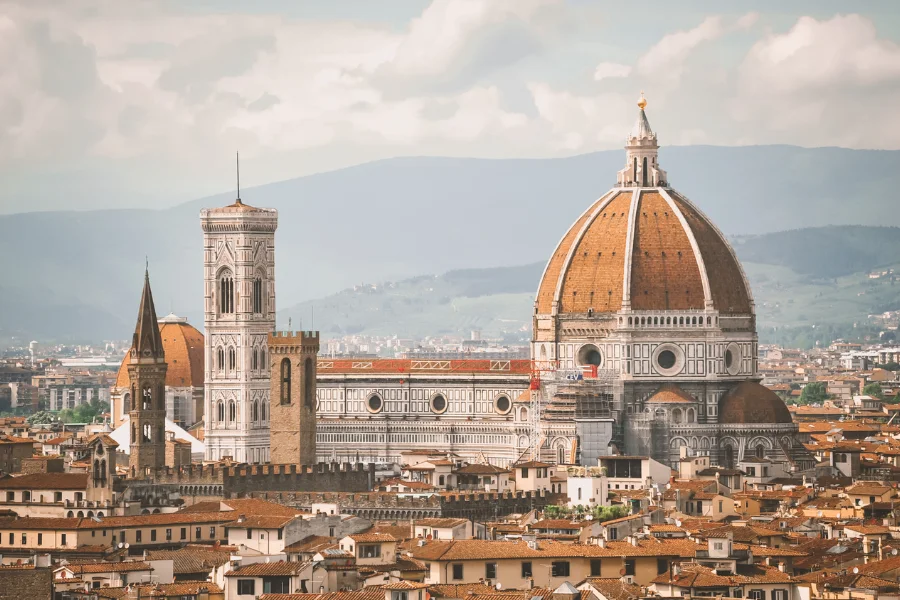
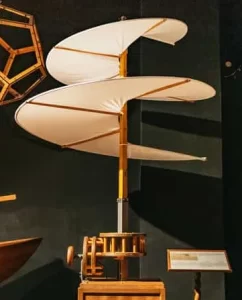
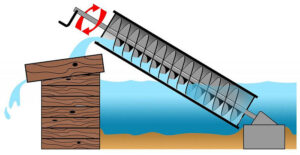
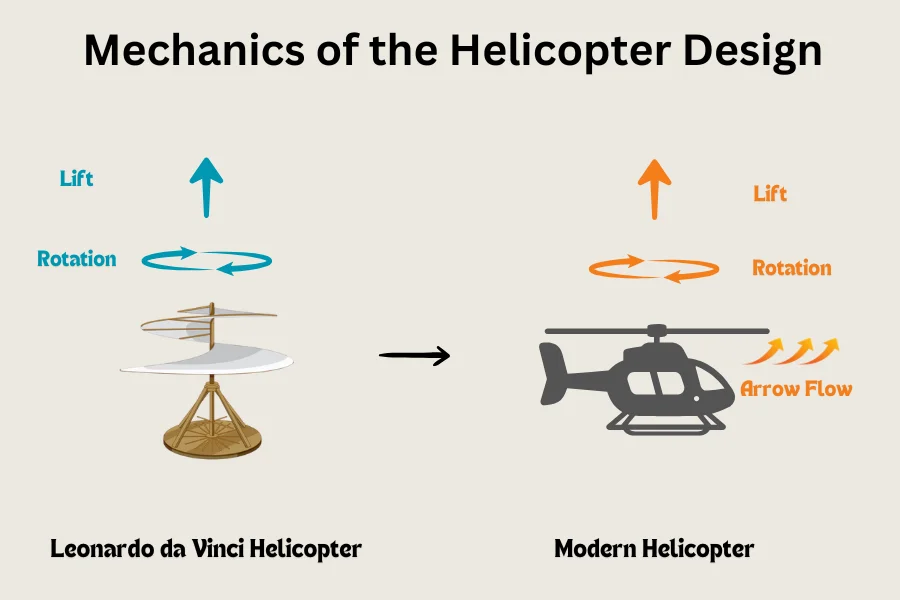
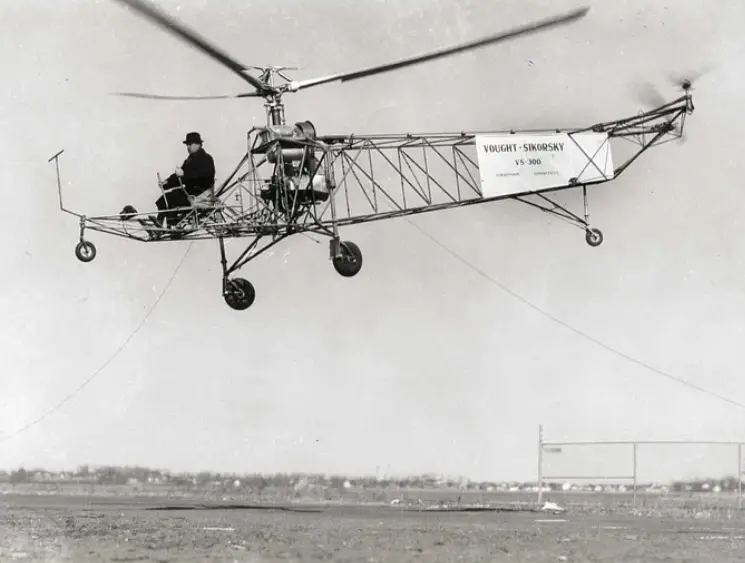
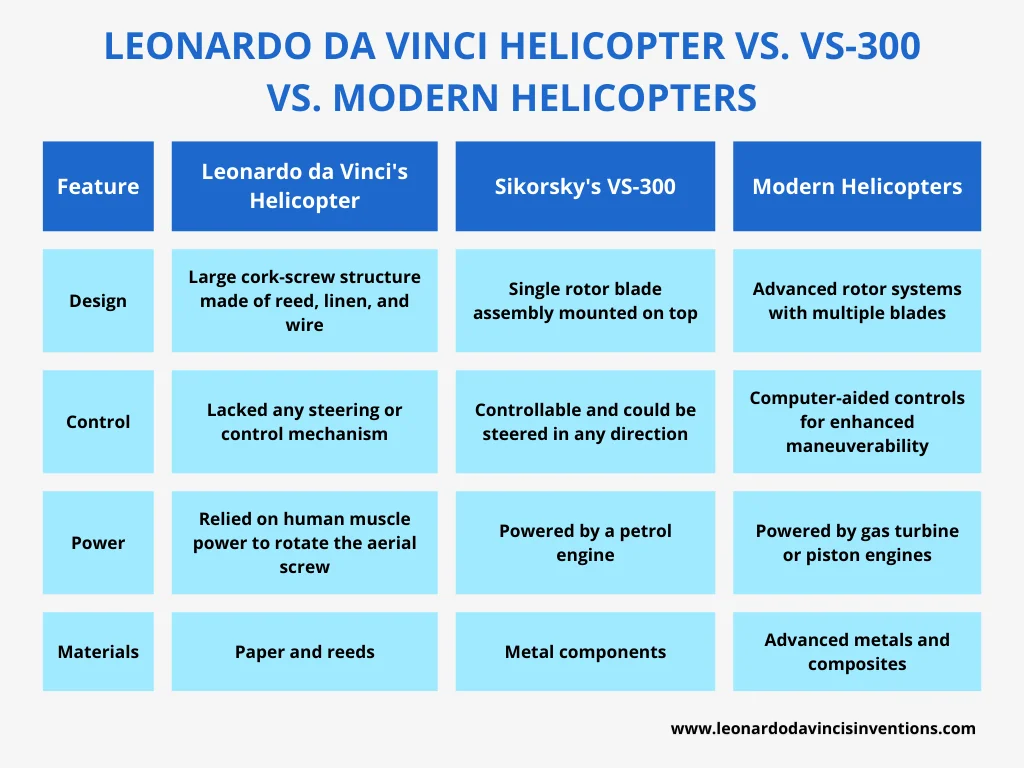
 I’m Leonardo Bianchi, the mind behind Leonardo da Vinci's Inventions. Thanks for visiting.
I’m Leonardo Bianchi, the mind behind Leonardo da Vinci's Inventions. Thanks for visiting. 